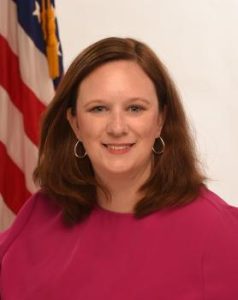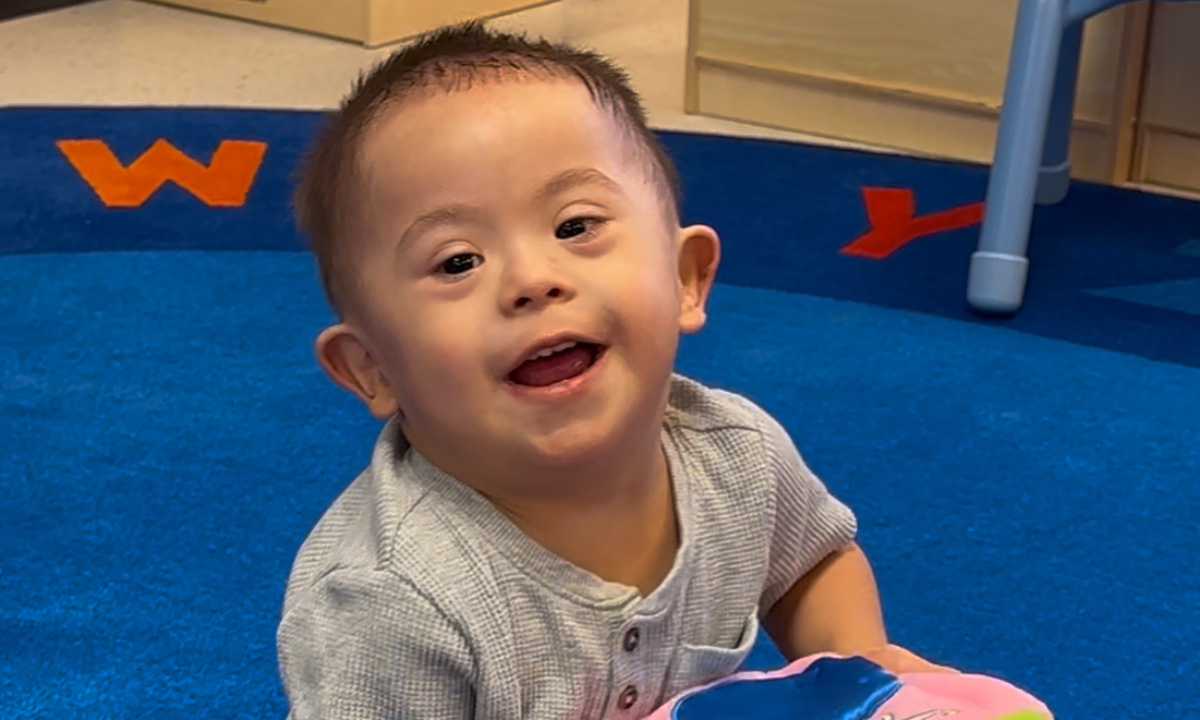Editor’s note: This story originally published on The 74 on April 18, 2025. After the story published, the Washington state nonprofit that operates the seven shuttered Head Start and 11 Early Head Start programs received the Notice of Award it had been waiting for, confirming its funding was coming. Inspire Development Centers has since been “moving quickly to recall all children and staff for a Monday morning start,” CEO Jorge Castillo said in a text message.
On Tuesday afternoon, instead of welcoming her son’s Early Head Start teacher for their weekly home visit, Gricelda Valenzuela brought 2-year-old Abram to his teacher’s office to say goodbye. The mom said she got choked up as she gave the teacher a parting thank you gift and Abram reached out for a hug.

“He looked at her, and when she carried him to say goodbye, he kind of just put his head on her shoulder,” Valenzuela said. “I’m not sure how much he understands of this, but I know he built a great relationship with her. I’m not sure if in the weeks to come he will feel that void of not seeing her or getting out of that routine.”
Abram is one of the at least 400 children in eastern Washington state who abruptly lost access to their Head Start or Early Head Start programs Wednesday morning, and his teacher was one of nearly 75 staff members who were laid off.
“I was just in shock,” said Valenzuela, who first learned about Early Head Start when she was pregnant with Abram and a blood test revealed he’d likely be born with Down Syndrome. “[The government can] just do that? It’s just gone? With no warning, nothing? There goes my son’s help.”
Jorge Castillo, CEO of Inspire Development Centers, the nonprofit that operated Abram’s program and others, said the federal funding award they were supposed to receive in mid-February still hadn’t arrived — nor had any communication about its delay. Without his regional Head Start office to turn to and not knowing when, or if, he would be reimbursed for expenditures, Castillo was forced to close seven Head Start and 11 Early Head Start centers that served predominantly low-income and Latino kids and families.
While he hopes the move is only temporary, he has no idea how long it will last or if the teachers he just let go will still be there if can rehire them at some future date.
“I’d never thought we’d even see this day,” said the veteran early child care provider who has been with his organization for 31 years.
‘Programs will go under’
The Washington state closures are the outcome most feared since President Donald Trump took office and plunged Head Start programs across the country into chaos and uncertainty.
The administration has frozen — then quickly unfrozen, then delayed — grant funding, shuttered five regional offices and fired scores of employees.
In interviews with over a dozen people currently or formerly affiliated with the early learning and wraparound support programs created in 1965 to combat poverty, it’s clear the last three months have left providers, educators, parents and staff scrambling and afraid.
Their sense of panic ratcheted up considerably after first USA Today and then The Washington Post reported that Trump’s 2026 proposed budget would fully defund and eliminate the Office of Head Start, reflecting a long-held wish of right-wing conservatives and a recommendation outlined in Project 2025, the Heritage Foundation’s playbook for how the administration should dismantle the federal government.
Neither the White House nor the Department of Health and Human Services, which oversees Head Start, responded to requests for comment. Funding for the Office of Head Start can’t be eliminated without congressional approval.
The prelude to the proposed elimination occurred on April 1 when approximately 500 employees under the Office of Administration for Children and Families, the HHS division that runs the Office of Head Start, received termination notices, according to a tracker created and maintained by former ACF staff.
They encompass the fired regional staff in Boston, New York, Chicago, Seattle and San Francisco, who were employed across a number of divisions beyond Head Start. Those include Family and Youth Services, which works to put an end to homelessness, adolescent pregnancy and domestic violence, and the Office of Family Assistance, which administers grant programs, including Temporary Assistance for Needy Families.
Overall, ACF’s footprint dropped from approximately 2,400 people in January to about 1,500 after April 1 — a greater than 35% reduction in staff in just three months, according to the tracker.
“This administration is clearly taking a behind-the-scenes, death-by-1,000-cuts approach where they try to cut it off at the knees,” said Katie Hamm, former deputy assistant secretary for early childhood development under President Joe Biden.

Before their firing, the six or so staffers assigned to Head Start in the Seattle office supported 58 Head Start and 53 Early Head Start grantees, serving over 28,000 children across four states, according to the Washington State Association of Head Start and the Early Childhood Education and Assistance Program.
These employees were considered experts in their regions and had a wide range of responsibilities, including processing grants and providing child safety oversight. Program leaders say they have nowhere to go now with their questions, needs or grant applications beyond a generic federal email address many say they don’t trust based on the administration’s actions so far.
“Programs will go under” as a result of these closures, said one of the dozens of fired Seattle regional office employees, who asked not to be identified by name for fear of losing his administrative leave benefits.
He pointed to Castillo’s organization as an example saying, “early learning programs are closing their doors. We’re going to lose out on child care slots — specifically in Tribal communities — because dollars are time limited and there’s just way too much work … to [get] money out the door. We’re going to see the work just not getting done and programs [not] being funded.”
Slashing the regional offices is like, “destroying the pipes that bring water to a community,” said Melissa Boteach, chief policy officer of ZERO TO THREE, a nonprofit advocacy organization. “If you’re gutting the staff that is overseeing and distributing the funding for a program, you’re going to end up restricting access to the end product, and in this case, that’s high-quality early learning for children. It’s going to be especially acute in rural areas and for children with disabilities.”
Valenzuela, the Washington mother and a high school math teacher, and her husband began looking for resources for Abram while she was still pregnant. Because of his disability, they were connected with Early Head Start. Since then, a teacher had been coming to their Sunnyside home for weekly visits to work with Abram on meeting his educational and developmental goals. Every other week, Abram would go to an Early Head Start classroom where he played with other kids and strengthened his sensory and fine motor skills.
“[He] has made great strides,” his mother said.
While she’s devastated to lose the program, she knows she and her family are privileged to have the resources to support Abram in other ways. But she’s worried for fellow community members who may not have the same access.
Almost 1 in 5 Sunnyside residents live in poverty. About 87% are Hispanic and the most common employment sector is agriculture and forestry. Valenzuela said she knows many of these parents rely heavily on the Head Start program.
“How are we going to leave this whole section of students without the help that they need?” she asked.
Waiting for May 1
All of this is part of a larger effort to “implode the program from the inside,” according to Joel Ryan, executive director of the Washington State Association of Head Start and the Early Childhood Education and Assistance Program, which represents providers and families. “They’re basically trying to kneecap the program so that the Head Start programs can’t operate as effectively.”

Some providers reported “rolling blackouts” to the payment management system in the weeks following Trump’s Jan. 27 memo, later rescinded, calling for a temporary federal funding freeze to “grant, loan and other financial assistance programs.” The outages prevented them from accessing federal funds and forced some to close their doors for a number of days, according to Ryan.
Then came the firings of federal probationary employees — those that were newly hired or promoted — which resulted in a loss of about 18% of the Head Start staff, according to Hamm, the former Biden administration deputy assistant secretary.
Two months later, on March 27, Secretary Robert F. Kennedy Jr. announced a major restructuring of HHS, which would reduce the workforce by about 10,000 full-time employees and consolidate 10 regional offices to five.
Most program and support staff across the five shuttered regional offices were fired and only learned of their terminations hours before the work day on April 1 via a mass email, Ryan said. Some didn’t realize they had lost their jobs until they arrived at the office that morning, only to be locked out of the building.
In total, the staff — some of whom had worked at the offices for decades — served 22 states, a number of territories, and hundreds of thousands of children, pregnant women and their families.

Head Start providers and grantees who report to those regional offices largely heard about the fallout through word of mouth and panicked texts and LinkedIn posts. They said they didn’t receive any official notice from the federal government until a boilerplate email arrived in their inboxes two days later.
Some providers are scared that if they call attention to their centers by asking for help they may face punishment from the administration so they’re avoiding official channels altogether and attempting to troubleshoot issues on their own. Others told The 74 they were too anxious to share their stories with the media — even anonymously — out of fear the Trump administration might still identify them and withhold their funding in retaliation.
Since its inception in the 1960s, Head Start programs have reached more than 38 million children and their families, the majority of whom meet federal low-income guidelines. In 2023, the $12 billion program served over 778,000 children from birth to age 5, pregnant mothers and their families in urban, suburban and rural areas in all 50 states and six territories.
Just over a third of those enrolled in Head Start programs were Latino, 29% were Black and just under a quarter were white. About 48,000 families served during the enrollment year experienced homelessness, and around 51,000 families received housing assistance through the program.
Head Start programs also connect families to community and federal assistance and can help provide a career pathway for parents into early child care and education. The 1,600 local agencies are funded by the federal government, though many also tap into state and local revenue sources.
In arguing for its elimination, Project 2025 asserts that Head Start has “little or no long-term academic value for children.”
While research around Head Start has found mixed results, the program appears to increase children’s economic opportunities and reduce poverty according to a 2022 study out of the University of California, Los Angeles and the University of Nebraska. Kids who attended Head Start were 2.7% more likely to complete high school and 8.5% more likely to enroll in college. College completion rates rose by 12 percentage points — an increase of 39%. And participation in Head Start appears to have reduced men’s reliance on public assistance and adult poverty rates among women.
Providers across the country now have their eyes set on May 1, when a number of them are expecting approvals of their next round of grants. Experts are concerned that the closure of the regional offices could result in a backlog of processing, which could then lead to more service disruptions for kids.
One program director said that even though her grant is not up for renewal quite yet, she’ll be closely watching those that are.
“Those guys I feel like are going to be the canary in the coal mine to let us see what happens,” she added.

Amanda Geduld
Amanda is a Staff Reporter at The 74.



